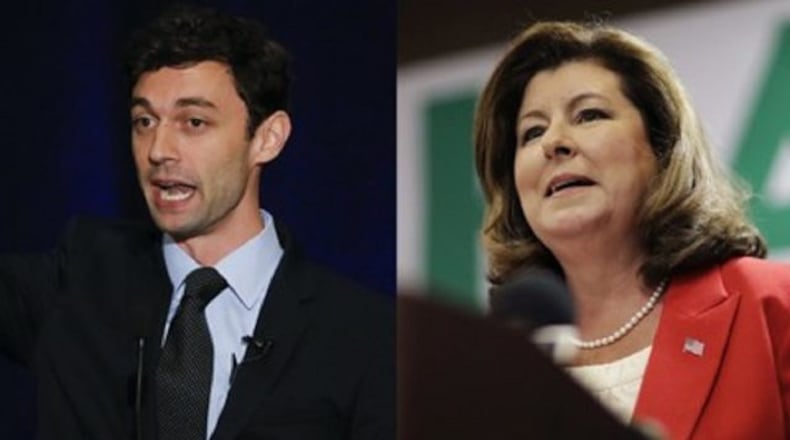There are so many ads in Georgia's 6th Congressional District race that they are creating the news. Literally.
The tidal wave of spending led a local television broadcaster, WXIA, to temporarily add a 7 p.m. newscast on its sister station. Fans of “The Andy Griffith Show” repeats will have to look elsewhere for the next few weeks.
It’s only the latest way the barrage of outside cash and national attention has transformed the race to represent the suburban Atlanta district. Once thought to be a sleepy special election, it is now poised to be the most expensive U.S. House contest in the nation’s history.
An Atlanta Journal-Constitution analysis shows that about $15 million was spent by candidates and outside groups in the run-up to the April 18 vote, which winnowed an 18-candidate field to a pair of finalists: Democrat Jon Ossoff and Republican Karen Handel.
Since then, the flood of money has only intensified. An additional $4 million has surged into the race in the past three weeks. And records show about $11 million in ad buys have already been booked through the June 20 runoff. That’s not counting expected big expenditures from Handel’s campaign or other groups that could kick up their spending.
The $30 million sum is an unprecedented expenditure. According to the Center for Responsive Politics, a transparency advocacy group, the most expensive House race was a 2012 Florida contest between Republican U.S. Rep. Allen West and Democrat Patrick Murphy that cost nearly $29.6 million.
Why all the attention? Republicans have held the district, which spans from east Cobb County to north DeKalb County, for decades, and Tom Price won a string of landslide victories there every two years to maintain his grip on the seat. But when Donald Trump selected Price as his health secretary, the race to fill his congressional seat quickly turned into a nationally watched test of the president’s popularity.
About the Author
The Latest
Featured




